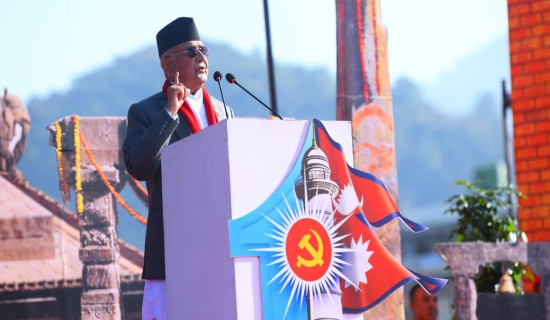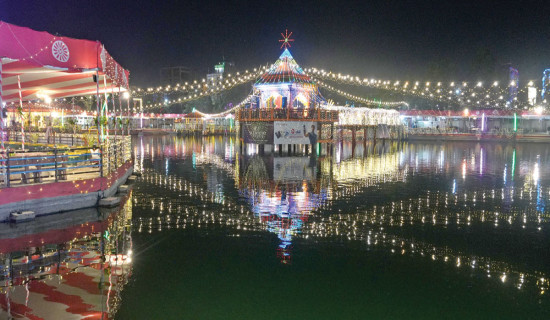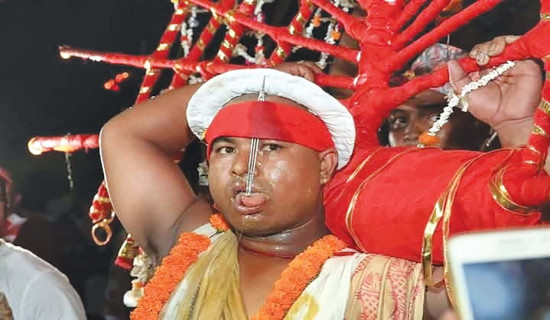- Saturday, 13 December 2025
Public transport still inaccessible to people with disabilities
Kathmandu, Oct 26: Most public transportation remains inaccessible to people with disabilities, even 11 years after the 'Accessible Physical Structure and Communication Service Directive for Persons with Disabilities, 2013 was introduced.
The directive includes a requirement for public transport operators to purchase buses accessible for individuals with disabilities whenever they buy new public buses.
Despite the legal provisions for disability-friendly public transportation, people with disabilities are unable to access public transportation. There is no awareness of accessibility standards.
Devi Acharya, President of Nepal Spinal Cord Injury Sports Associations (NSCISA) and also wheelchair users, said “We face innumerable problems as soon as we leave the house. Wheelchair users have been facing more difficulty compared to people with other forms of disabilities.”
There is always an ordeal to reach the destination. As a consequence, people using wheelchairs have to use a taxi, which is more expensive than the bus, she said.
“Public transportation is zero per cent accessible for wheelchair users. We face tremendous difficulties while visiting our desired places like temples, museums, cinema theatres, parks, shopping malls and other places. Public transportation becomes the first barrier to reach the destination," she said.
The poor footpath and road infrastructure make it also difficult for people with disability to travel. Likewise, the lack of disable-friendly government offices, hospitals, health care facilities, religious monuments, workplaces, sidewalks, passenger-waiting places, parking lots, playgrounds, conference halls, cinema halls and business complexes, hotels and restaurants, ATM services further limits our accessibility,” she said.
Acharya, a permanent resident of Butwal and currently living in New Baneshwor, has been a wheelchair user for 20 years after she met with a jeep accident and said, “Our domestic air services are also not disabled-friendly.”
Air companies do not use disability ramps making it difficult for wheelchair users to move. There are not many wheelchair-accessible cabins on the plane, she said.
“I do not feel dignified when other unknown people carry me when getting in and out of the plane”, she said.
The government, local authorities and relevant agencies are required to make ticket counters, waiting rooms, bus parks, passenger loading zones, toilets and footpaths that are accessible for wheelchair users, dwarf persons, the visually impaired and white stick users.
Despite the legal provisions for disabled-friendly public transportation, buildings and infrastructures and the duty and responsibility of the concerned authorities to fully implement the directive, municipalities and rural municipalities have not yet taken these issues into consideration while granting approval to infrastructures.
Even the government-funded buildings and other infrastructures constructed or under construction are not disabled-friendly, said Kiran Shilpakar, former President of the National Association of the Physical Disabled-Nepal (NAPD).
While talking about the implementation of the 'Accessible Physical Infrastructure and Communication Service Directive' even 11 years after its introduction, Shilpakar said that the implementation part of the directive was very poor.
To create disabled-friendly transportation, firstly the government needs to construct disabled-friendly infrastructures like roads, bus stands, footpaths and terminals, said Saroj Sitaula, Senior Vice President of the Federation of Nepalese National Transport Entrepreneurs.
Infrastructures are not disability-friendly to ply disability-friendly vehicles. Retrofitting current vehicles to meet the needs of people with disabilities needs a huge investment. Accessibility of disabled individuals should be ensured while designing public transport projects from the beginning, he said.
Mahendra Raj Pandeya, General Manager at Sajha Yatayat, said that out of the 111 Sajha buses, 40 disability-friendly buses are plying currently on several routes. Low-floor electric buses are intended to be more accessible to wheelchair users compared to high-floor buses.
















